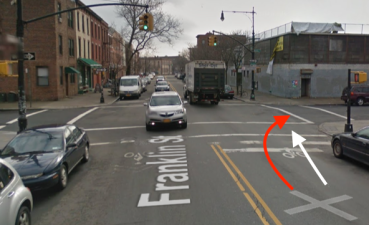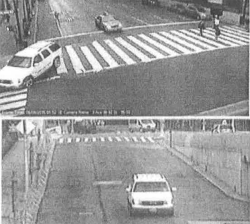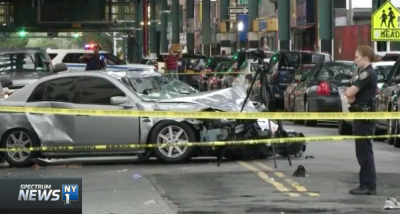Justice for Victims of Hit-and-Run Drivers in New York Shouldn’t Be So Rare
Albany has to stop dithering and give prosecutors adequate tools to hold hit-and-run drivers accountable -- and prosecutors must be more willing to pursue cases.

The motorist convicted of manslaughter for killing Brooklyn cyclist Matthew von Ohlen in 2016 was sentenced last week to five to 15 years in prison. The outcome of Juan Maldonado’s trial was a victory for von Ohlen’s family and friends, Acting Brooklyn District Attorney Eric Gonzalez, and the public. It was also a rare case of New York’s traffic justice system holding a hit-and-run driver accountable for taking a life.
Most hit-and-run drivers who injure people in NYC are never charged with a crime. In cases where a perpetrator is identified, police and prosecutors often accept the driver’s word that he or she had no knowledge of a collision, rather than letting the courts determine innocence or guilt. It is not unusual for NYPD to publicly offer the “didn’t see” defense before investigators have even identified or interviewed a suspect.
Maldonado claimed he was unaware he hit von Ohlen. But it appears video evidence and Maldonado’s actions after the crash prompted the DA to pursue charges.
Video showed Maldonado pass two other drivers who were stopped at a red light on Grand Street before he swerved into the bike lane, hit von Ohlen from behind with his Camaro, and drove off. According to DNAinfo, at the sentencing hearing Judge Suzanne Mondo referenced a security video taken the next day of Maldonado “laughing with friends before he drove out of state in his battered car.”
“It said everything about your complete lack of remorse and total disregard for human life,” said the judge.
In the days after the crash, police said video appeared to indicate the driver struck von Ohlen deliberately. The DA’s office initially charged Maldonado with assault in the first degree, a more serious charge than manslaughter and a possible sign that prosecutors intended to argue intent. But that charge was later dropped or dismissed.
When prosecutors do bring charges against hit-and-run motorists who kill, the typical top charge is leaving the scene of an accident resulting in death, which carries a less severe penalty than manslaughter, the charge prosecutors tend to apply when a drunk driver kills someone. Albany lawmakers have failed repeatedly to act on prosecutors’ calls to elevate the charge for leaving the scene of a serious injury from a class E felony (New York’s least severe felony category) to class D, and the charge for a fatal hit-and-run from a class D felony to class C. This would align the penalties for manslaughter and leaving the scene.
Appearing with Gonzalez at a press conference last month, Brooklyn Assembly rep Joe Lentol announced that he will introduce legislation next year to elevate hit-and-run penalties.
Changes to state code notwithstanding, prosecutors shouldn’t be so hesitant to pursue hit-and-run and other vehicular crimes cases, says Transportation Alternatives Legislative and Legal Director Marco Conner.
“We still have prosecutors who refrain from bringing charges that they would have brought without hesitation had the dangerous instrument been anything other than a vehicle,” Conner told Streetsblog, “and DAs who lack willingness and courage to prosecute vehicular offenses in a way that helps send a sustained message to the general public that those actions are no longer acceptable.”




